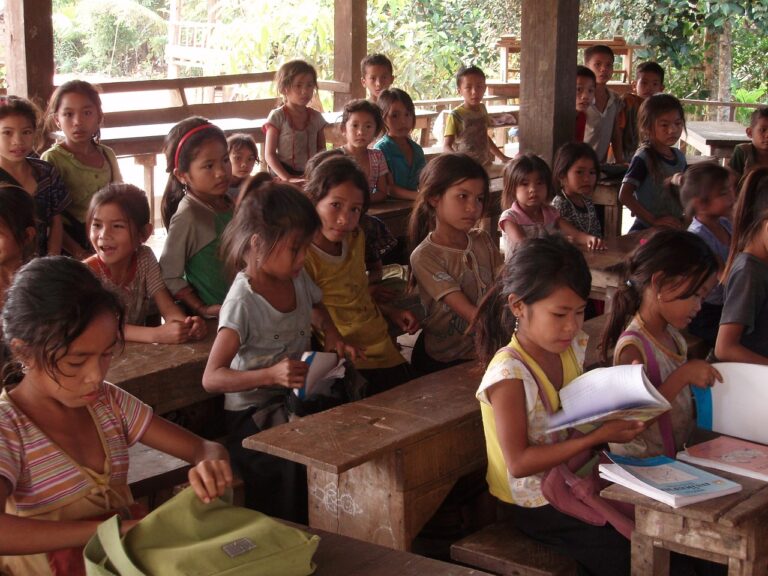Leveraging Virtual Reality for Cultural Sensitivity Training in Healthcare
Cultural sensitivity training plays a crucial role in healthcare settings by fostering a deeper understanding and appreciation for diversity among patients. By recognizing and respecting cultural differences, healthcare providers can establish stronger connections with patients and deliver more effective care tailored to individual needs. Culturally sensitive healthcare practices not only enhance patient trust and satisfaction but also contribute to better health outcomes and overall well-being.
In a multicultural society, cultural sensitivity training is essential for healthcare professionals to navigate the complexities of diverse patient populations. Effective communication and empathy are key components of providing culturally competent care that addresses the unique beliefs, values, and practices of each patient. By promoting cultural sensitivity in healthcare settings, providers can create a more inclusive and equitable environment that promotes positive patient experiences and outcomes.
Understanding the Impact of Cultural Competence on Patient Care
Cultural competence is crucial in healthcare as it helps healthcare providers understand and respect the diverse backgrounds and beliefs of their patients. By being culturally competent, healthcare professionals can establish trust and rapport with patients, leading to improved communication and ultimately better health outcomes. Patients are more likely to follow through with treatment plans and preventive care when they feel understood and valued by their healthcare providers.
In addition, cultural competence promotes a more inclusive and equitable healthcare system by ensuring that all patients receive care that is sensitive to their individual needs and preferences. This can help reduce disparities in healthcare access and outcomes among different demographic groups. Ultimately, by prioritizing cultural competence in patient care, healthcare providers can deliver more patient-centered and effective healthcare services.
• Cultural competence helps healthcare providers understand and respect diverse backgrounds and beliefs of patients
• Establishes trust and rapport with patients, leading to improved communication
• Patients more likely to follow through with treatment plans when they feel understood and valued
• Promotes a more inclusive and equitable healthcare system
• Ensures all patients receive care sensitive to individual needs and preferences
• Helps reduce disparities in healthcare access and outcomes among different demographic groups
By prioritizing cultural competence in patient care, healthcare providers can deliver more patient-centered and effective healthcare services. This ultimately leads to better health outcomes for all patients, regardless of their background or beliefs. It is essential for healthcare professionals to continuously educate themselves on various cultures, traditions, and beliefs to provide the best possible care for their diverse patient population.
Challenges Faced in Traditional Cultural Sensitivity Training Methods
Traditional cultural sensitivity training methods often encounter difficulties in effectively addressing the diverse needs of healthcare professionals. One challenge lies in the lack of individualized approach, as these methods often adopt a one-size-fits-all mentality, failing to recognize the unique cultural backgrounds and experiences of participants. This can lead to a superficial understanding of cultural competence, hindering the development of genuine empathy and awareness.
Moreover, traditional training methods may struggle to engage participants actively, resulting in passive learning experiences that fail to foster real behavioral change. The reliance on lectures and presentations, without interactive and experiential components, limits the effectiveness of these programs in enhancing cultural sensitivity. Without meaningful opportunities for reflection, dialogue, and hands-on practice, participants may struggle to internalize the importance of cultural competence and its impact on patient care.
What are some common challenges faced in traditional cultural sensitivity training methods?
Some common challenges include lack of cultural diversity in training materials, one-size-fits-all approach, lack of engagement techniques, and difficulty in evaluating the effectiveness of the training.
How does the lack of cultural diversity in training materials hinder the effectiveness of cultural sensitivity training?
When training materials do not adequately represent diverse cultures, participants may not gain a comprehensive understanding of different cultural perspectives and practices, limiting the effectiveness of the training.
Why is the one-size-fits-all approach problematic in cultural sensitivity training?
The one-size-fits-all approach assumes that all participants have the same level of cultural competence and overlooks the unique cultural backgrounds and experiences of individuals, leading to ineffective training outcomes.
How can the lack of engagement techniques impact the effectiveness of cultural sensitivity training?
Without engaging and interactive training techniques, participants may become disinterested or disengaged, hindering their ability to absorb and apply the cultural competence concepts presented in the training.
What challenges arise in evaluating the effectiveness of traditional cultural sensitivity training methods?
Traditional methods often lack clear metrics and evaluation tools to assess the impact of the training on participants’ attitudes, behaviors, and patient outcomes, making it difficult to determine the training’s overall effectiveness.





